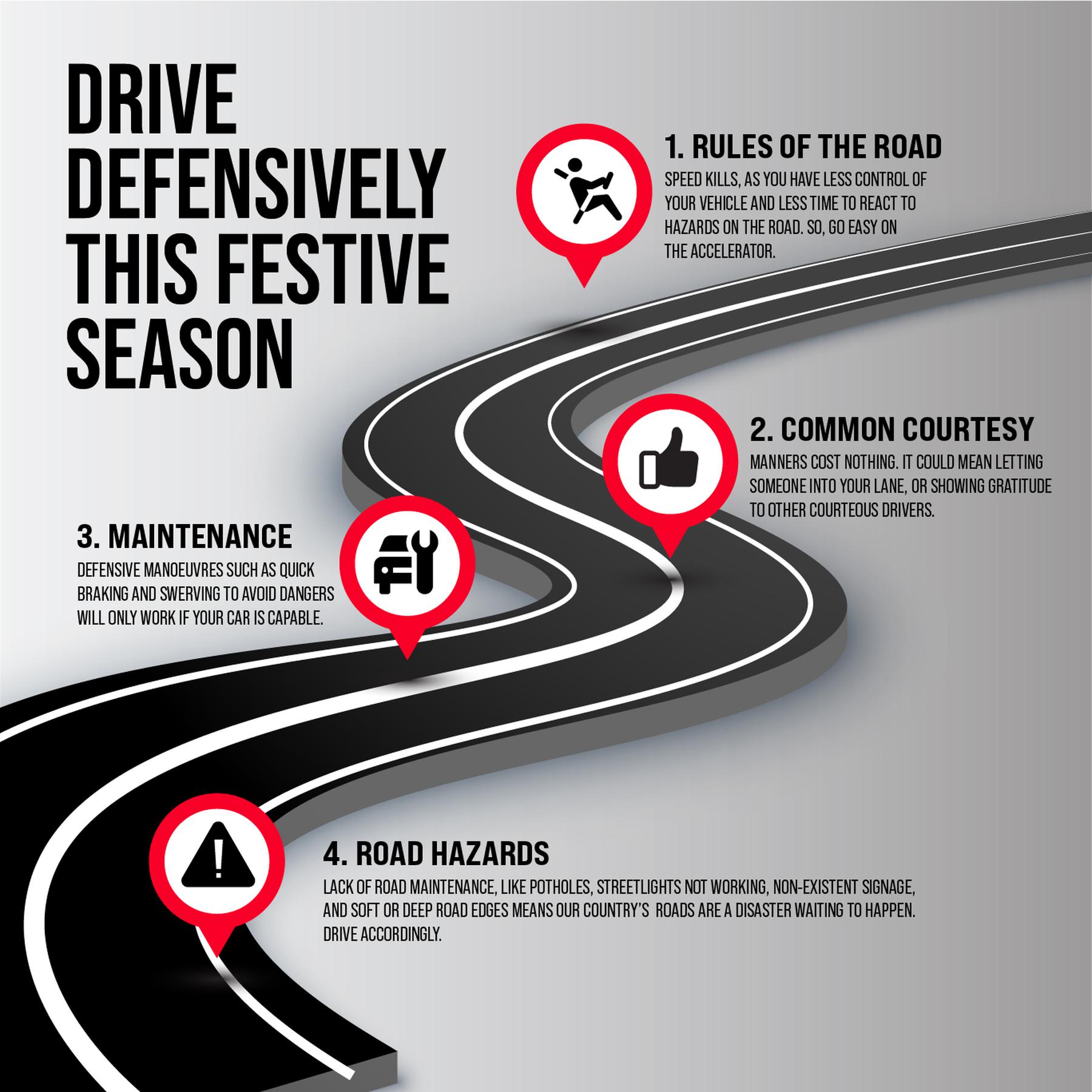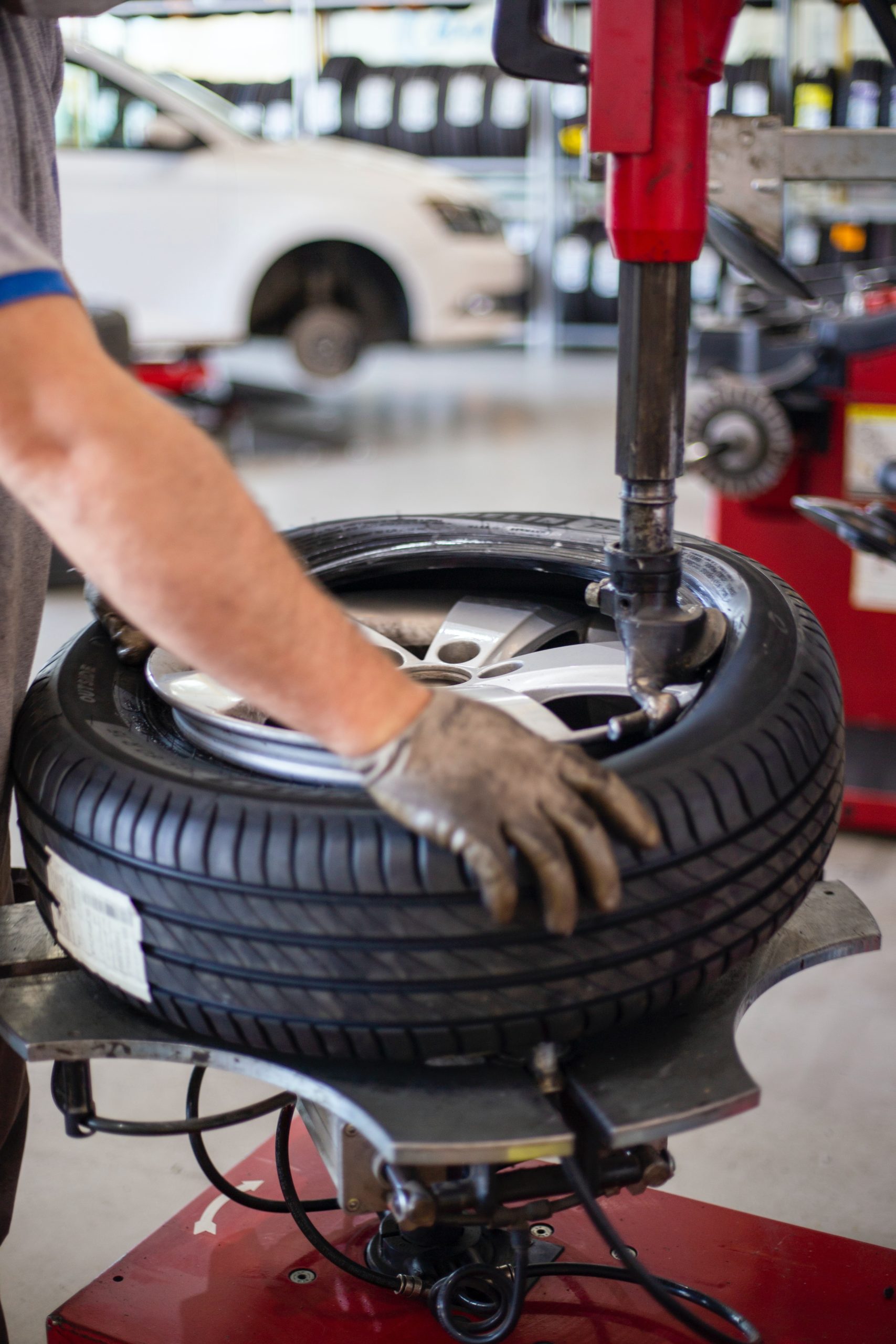3 Things Which Help Reduce Your Monthly Insurance Premiums
Car insurance is an investment that provides peace-of-mind in the event of accidental damage or loss to your vehicle; however, it can be pricey.
Car insurance is an investment that provides peace-of-mind in the event of accidental damage or loss to your vehicle; however, it can be pricey.
Compiled by H&H Admin
December is the most eagerly anticipated time of the year. It is also the most dangerous time to drive.
Wikipedia defines defensive driving as driving to save lives, time, and money, despite the conditions around you and the actions of others.
You may have covered the basic principles but you may have forgotten them over time, so it’s important to refresh your memory and stay abreast of current trends.

Here are a few practical steps that you can take to increase your safety and that of your loved ones.
There are, essentially, three principles to defensive driving.

Manners cost nothing. It could mean letting someone into your lane or showing gratitude to other courteous drivers. If everyone drove with manners and predictability, the roads would be a much safer place.
As we all know, however, not everyone does. So, assume the worst of others and drive accordingly. Give everyone ample space, and you’ll protect yourself, no matter what they do.

Defensive manoeuvres such as quick braking and swerving to avoid dangers will only work if your car is capable. Ensure your vehicle is in tip-top shape, especially before a long trip over the holidays.
Top up your car’s fluids. Ensure hoses and belts are in good condition and properly attached. Make sure your tyres, as well as the spare, are in good shape and inflated to the correct pressure.


And remember, you’re on holiday and it starts from the moment you hit the road. Don’t be in such a rush that you forget to enjoy the journey. Take a break every two hours to stretch your legs. You’ll stay fresh and alert to dangers.
Start your preparation for the holiday season by ensuring your tyres are in top condition.
Source: TI Auto
Apart from basic driving skills, there are other important skills each new driver should possess. Learn them now and they will stand you in good stead for the rest of your life.
Adjusting your car seat is about more than just getting comfortable; it is also about ensuring good visibility, improving safety, and aiding in the execution of driving manoeuvres.
The first thing to do is to sit up straight and press your shoulders against the backrest of the seat. Bend your legs slightly bent at the knees, by pressing all the way down on the clutch and brake pedals. Then move your seat forward or backward until the required position is achieved.
Now rest your wrists on top of the steering wheel with your hands hanging down the back. If your shoulders are no longer touching the backrest, it has to be adjusted to a more upright position. Once this is done you should place your hands in either the ten-to-two or quarter-to-three position on the steering wheel. Your arms should be bent at roughly 45 degrees. Adjust the steering wheel so that you have a clear view of the instrument panel.

This goes much further than simply knowing whether your vehicle has a petrol or diesel engine, or is fitted with a manual or automatic transmission.
To start with, you should know where the bonnet and fuel flap releases are, and you should know the correct tyre inflation pressure of the vehicle. This information can be found in the owner’s manual or on the inside panel of the driver’s door. Also, check where the spare wheel and jack are located.
It is important to know what safety features your vehicle is fitted with. Does it have airbags and, if so, how many, and where are they located? Does the vehicle have an anti-lock braking system (ABS)?
Over time you will get to know your vehicle, and as you become more familiar with it, you will gain more confidence driving it.

Defensive driving is, essentially, the ability to identify potentially dangerous situations and react to them in a timely manner. It’s about being proactive and anticipating what could go wrong before it does.
Defensive driving requires the driver to be focused and aware of what is happening around them at all times. Don’t allow yourself to be distracted. Check your mirrors and blind spots regularly and scan the road ahead. Be aware of what is beside you. Don’t assume a vehicle will come to a standstill at a stop sign or traffic light, or that the pedestrian about to run across the road sees you approaching.
Remember it is just as important to be seen as it is to see, so stay out of the blind spots of other vehicles and maintain a safe following distance. Importantly, don’t distract yourself by using electronic devices while driving, or doing any other activity such as eating or applying make-up, while you are behind the wheel.
When overtaking, check if the road markings allow for this. If there is no solid white line preventing overtaking, check for oncoming traffic before signaling your intent to pass and overtake. Keep your indicator on, until you have passed, and then indicate your intention to move in front of the vehicle you have passed. Do not overtake on a blind rise, or if you cannot see far enough ahead to make a proper judgment of timing. Remember, your life is more important than reaching your destination five minutes early.

Sooner or later you will have no choice but to drive in less than perfect weather. These can include anything from floods and strong winds, to thick mist, all of which require a higher level of driving skill.
The most important thing is to remain alert and calm and to be on the lookout for potential hazards. Visibility is key, so increase your following distance, reduce your speed, and switch on your headlights. Staying focused on the road ahead will require all your attention so eliminate distractions such as loud music.
In this type of weather, you don’t want to realize for the first time that your windscreen wipers (front and back) are not working properly. Check these regularly and remember that even if you don’t use them, they may become worn because of the sun.

Although traffic signs and their meanings are extensively covered in the test for a learner driving license, there are many motorists who don’t seem to know what some of the signs mean, or who don’t know the rules of the road.
Who has right of way at a four-way stop or a traffic circle? What do you do when the traffic lights are out of order? Must you stop at a yield sign and a pedestrian crossing? These are all basic, but important questions, which you should know.

How you behave while driving is just as important as correctly operating your vehicle. It’s all about having the correct attitude and exercising self-discipline.
You share the road with other vehicles, motorcycles, bicycles, and pedestrians, and your wants and needs do not take precedence over theirs. Be courteous and considerate of other road users. Remain calm, no matter how rushed you are, and rather arrive late than not at all.
Don’t give in to road rage. Listen to soothing music or practice relaxation techniques if you feel your temper flaring.
Driving requires your full attention so keep your hands off your mobile phone and the volume of the radio down. Being distracted and losing concentration could have terrible consequences, so remain focused on the road.
In conclusion, the more time you spend driving the better you will become at it. There is no substitute for experience but through practice, the right attitude, and a calm demeanor, you will learn the skills to be a good, safe driver.
Sources: The AA, Arrive Alive